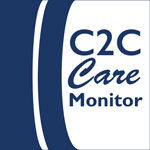WWII Ship Hammock
Tagged: Hammock, Textile Cleaning, WWII
- This topic has 3 replies, 3 voices, and was last updated 8 years ago by
 Mary Ann Gabriel.
Mary Ann Gabriel.
-
AuthorPosts
-
-
April 4, 2016 at 10:07 am #134574
Sarah Maloney
ParticipantHello!
We recently acquired a WWII hammock that a sailor would have used on the ships. There’s the hammock itself with ropes attached, a cover, a mattress pad and a mattress cover. They’re all soiled pretty badly. The material is either cotton or canvas. I’m wondering if you have any advice on how I could clean them?
Our museum is small and cannot afford a conservator for this piece so I’m looking for reasonable advice with that in mind.
-
April 5, 2016 at 11:49 am #134575
 Marie SchlagParticipant
Marie SchlagParticipantHi Susan,
Without the assistance of a conservator the best advice i can offer for cleaning would be to begin by vacuuming, then sponge cleaning with a soot sponge or latex free sponge in order to remove surface particulates. If it is possible to clean the cotton items with water (if you have the space) you can release some of the soiling simply by wetting out the objects. Repeat this step in a warm bath with a small amount of dye-free, fragrance free, etc., detergent, and you may see a noticeable difference. Be aware though, that this takes space not only for the washing step but also for the drying step which must be done on towels laid out flat. You will also experience a bit of fugitive color from the ropes and brass grommets so proceed with caution when drying and if at all possible don’t let the roping into the water bath. I hope this helps. Good luck. -
April 5, 2016 at 12:23 pm #134576
 Mary Ann GabrielParticipant
Mary Ann GabrielParticipantHi Sarah,
Thanks for your collections care question. Cleaning the hammock and accessories before storage is the best insurance for the ongoing conservation of the objects.
Marie offered you excellent suggestions for the cleaning of the hammock and accessories. I would add that before beginning the cleaning of the objects, you conduct a thorough condition assessment if you haven’t already done so. Photograph and examine the hammock and accessories carefully to document existing damage and determine whether there are any active threats to the objects, such as mold, mildew, or pest infestation. These threats require immediate attention and, in the case of active pest infestation, isolation from the rest of your collection. Consider also, whether the objects may potentially pose a threat to you or your staff as you are handling them. Excessive or active mold and mouse droppings/urine/nesting material (from specific mouse species in various areas of the country) are air-borne and contact health hazards. Special considerations are needed in mitigating these contaminants.
The fabric and ropes are likely cotton or possibly hemp, which was processed into rope, cloth and, cordage during the WW II era. These organic materials are quite sensitive to the environment and continually absorb or lose moisture, which can reactivate dormant mold. Organic materials also absorb compounds from the air such as dirt, airborne chemicals and pollutants. These are all possible soil sources with which you are dealing.
If you determine that the fabric and ropes can withstand it, and the objects pose no health hazard, the hammock and accessories can be gently vacuumed on low suction using a vacuum tool nozzle covered with fine mesh fabric to prevent the object from being stressed. Loose soil and debris will be removed. You could then follow Marie’s additional suggestions. Your hammock and accessories should then be ready for storage in a controlled environment.
While a conservator could provide care or treatment to bring the objects back as close as possible to their original appearance or function, by taking these simple steps, you will be able to provide preventive conservation of the objects, minimizing further change and maximizing the longevity.
Best,
Mary Ann -
April 5, 2016 at 5:05 pm #134577
 Mary Ann GabrielParticipant
Mary Ann GabrielParticipantSarah,
You may already have checked the links to online resources for textile conservation under the “Resources” tab on the Connecting to Collections Care website where you found this discussion board. http://www.connectingtocollections.org/resources/ In doing a quick browse, I saw some links which may have useful information for you. When you click on “Care for Textiles” a list of annotated resources appears at the bottom of the page. The link to “Caring for Textiles” by the American Institute for Conservation is a brief guide to cleaning, storing, handling, and displaying textiles. The “Climate and Textile Storage” brochure from the Smithsonian Museum Conservation Institute might be helpful once you have your items cleaned. Also, if you scroll to the bottom of the list of topics on the right-hand side of that page, you will see a section with additional resources on textiles. “Stain Removal” and “Mold and Mildew” are two other topics which could possibly apply to your circumstances.
Best,
Mary Ann
-
-
AuthorPosts
- The forum ‘Connecting to Collections Care Forum Archives – 2015 through 2018’ is closed to new topics and replies.




